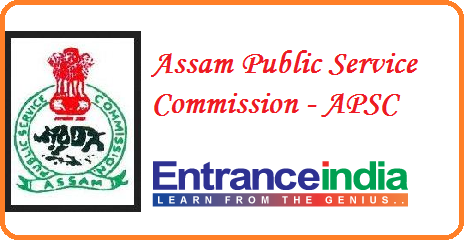| Lok Sabha Constituencies in Kendujhar district, Odisha (MP Constituencies) | Keonjhar |
| MLA Assembly Constituencies in Kendujhar district, Odisha | Anandapur Champua Ghasipura Keonjhar Patna Telkoi |
About Kendujhar (Keonjhar) District :
The Keonjhar District emerged as one of the District on 1st January, 1948. The District is bounded by Mayurbhanj District and Bhadrak District to the east, Jajpur District to the south, Dhenkanal District and Sundargarh District to the west and West Singhbhum district of Jharkhand State to the north. Covering a geographical area of 8240 sq kms, the Keonjhar District lies between 210 1’ N to 220 10’ N latitude and 850 11’ E to 860 22’ E longitude.
As per 2001 census, the total population of Keonjhar District is 15, 61, 990. The District comprises total 7, 90, 036 male population and total 7, 71, 954 female population. Total SC population of the District is 1, 81, 488 whereas the ST population is 6, 95, 141.
As per the administrative set up is concerned, the Keonjhar District has got three sub divisions namely Anandpur, Champua and Keonjhar. There are 13 tahsils, 13 blocks, 286 GPs, 2132 villages functioning in the District.
The climate of Keonjhar District is characterized by an oppressively hot summer with high humidity. Summer generally commences in the month of March. Temperature begins to rise rapidly attaining the maximum in the month of May. During the summer, maximum temperature touches around 380 C. The weather becomes more pleasant with the advent of the monsoon in June and remains as such up to the end of October. The temperature in the month of December is lowest i.e. it hovers at around 110 C. Sometimes it even drops down to as low as 70C. The average annual rainfall is around 1534.5 mms.
Keonjhar is one of the major mineral producing Districts of Odisha. Iron ore, Manganese ore, Chromate, Quartzite, Bauxite, Gold, Pyrophillite and Lime Stone are the major minerals found in this District. The Kalinga Iron Works (Barbil), Ferro Manganese Plant (Joda), Ipitata (Beleipada), Charge Crome (Brahmanipal) are the major names in the industrial scene of Keonjhar. There are also engineering and metal based industries (53 numbers), chemical and allied industries including plastic industries (48 numbers) and agro and marine based industries (242 numbers) functioning in this District.
The major crops grown in the Keonjhar District are Paddy, Maize, Til, Niger, Arhar etc.
Keonjhar District celebrates many festivals round the year. Sarhul, Sohrai, Karmapuja, Bodam, Chaitra Parab, Makar Sankaranti, Nuakhai, Raja Parab, Burani Jatra, Ratha Jatra, Shivaratri are the famous festivals celebrated in the District. The other local festivals celebrated in the District are Ram Navami, Dusshera, Dola Yatra, Rasha Purnima, Bada Osha and Chandan Jatra etc.
Tourist Places :
Ghatagaon :

|
50 kms. from Keonjhar town on the N.H.215 towards Cuttack, the place is known through the state for the shrine of Goddess Tarini Pitha. The place is famous as a centre of pilgrimage for Goddess Tarini. A P.W.D. I.B., Tarini Yatri niwas of Tarini Trust and a Panthasala of Tourism Deptt. Are available to cater the accommodation facilities. |
|
| District Headquarter : | Keonjhar |
| State Capital : | Bhubaneswar |
| Nearest Railway Station : | Harichandanpur |
| Nearest Airport : | Bhubaneswar |
| How to Reach : | |
| Ghatagaon is only 50 km from Keonjhar town. Tourists visiting Ghatagaon have to pick the bus Services from Bhubaneswar to Keonjhar. Tourists travelling by bus can find also direct bus services to Ghatagaon Pitha Mandir. Those who travel by train the nearest Railway Station is Harichandanpur(17 K.M. From Ghatagaon).Bhubaneswar, the capital city of Odisha, is the only civil airport in the state connected to different parts of the country through regular flights. The major cities connected to Bhubaneswar are Kolkata, Chennai, Visakhapatnam, Delhi, Hyderabad, and Mumbai. From Bhubaneswar very good road transport facility is available to reach the Temple of MAA. | |
| Best Time : | November to Frebruary |
| Contact Person : | Asit Das (Tourist Officer Incharge) |
| Contact Person Phone : | 9437245400 |
| Contact Person Mobile : | 9437245400 |
Badaghagara :


Khandadhar :

A sparkling waterfall of 500 ft. amidst lush green forest. A shower in the cascading water is a great experience. This waterfall is a smoking waterfall because of the “Smoke like” appearance created by the spray of the plunging waters of the waterfall at this spot. The spot is ideal for picnic.
Gonasika :

Surrounded by a series of valleys and wooded hills of varying colours, the place is famous as a centre of pilgrimage for the temple of Brahmeswar Mahadev established by the side of river Baitarani. In fact, this is the place from where the river starts flowing. A little away from the point of origin, the river goes underground and hence called guptaganga only to be seen jumping after a short distance over a stone projection looking like the nostril of a cow. The scenic beauty of the place is simply charming. For accommodation tourists will have to stay at Keonjhar town.
